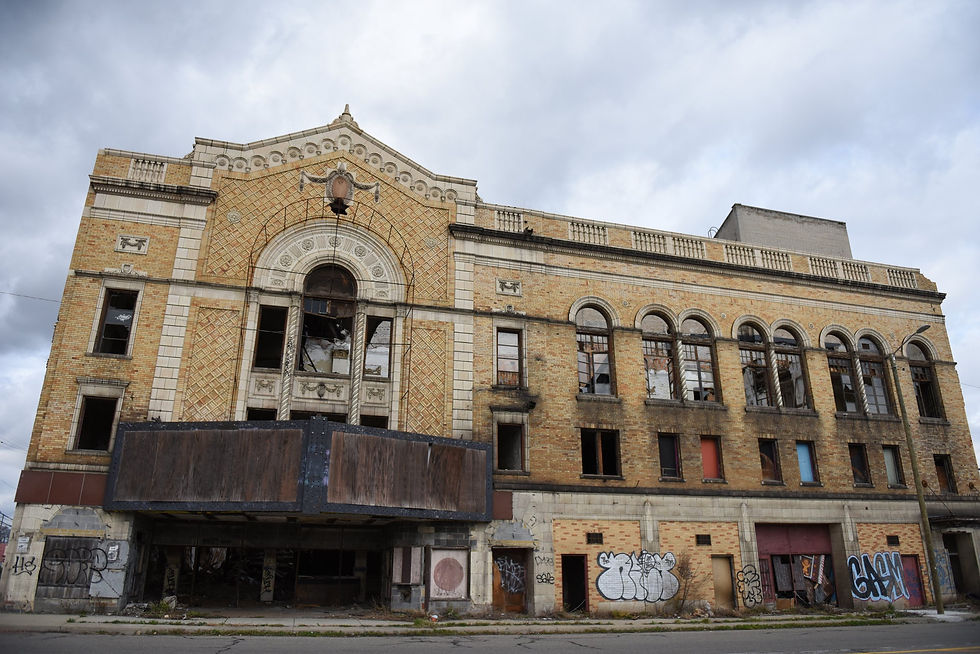4/13/71 - Catholic Youth Center, Scranton, PA
- ARM

- Dec 31, 2017
- 3 min read

4-13-71 Catholic Youth Center, Scranton, PA gd71-04-13.sbd.bertha-ashley.32077.sbeok.flac16
1. Casey Jones, Mama Tried, Loser, Big Boss Man, Me and Bobby McGee, Bertha, Cumberland Blues, Big Railroad Blues, Playin’ in the Band, Hard to Handle, Sugar Magnolia. 2. Truckin’, Drums, Good Lovin’, I Second That Emotion, Greatest Story Ever Told, Johnny B. Goode E. Uncle John’s Band.
This is a beautiful little show. It happened in an odd place and, as seems so often the case with the Dead, wonderful moments occur in the strangest of places. It’s the “Tuesday in Norman, Oklahoma” effect. (What am I talking about? NFA>Wharf Rat on 10/11/77. Jesus! It was just a Tuesday in Norman.) I’ll get to the moment on 4/13/71, but first the locale.
Scranton is drab town and by all accounts the Catholic Youth Center in Scranton was a drab venue on a drab corner. Today, it’s the home gym of Lackawanna Junior College. Drab. But imagine it is spring 1971. You are in one of the Dead’s new tour buses, likely still buzzing from the incredible run at the Capitol in February, but still adjusting to the loss of Hart and McKernan’s rapid decline. Suddenly, it seems that the band is operating as just a quartet. Now, you are pulling into Scranton on a Tuesday looking for something called the Catholic Youth Center. More specifically, you are headed for a rec league basketball court on the second floor of a desultory Depression-era building. I don’t know this, but let’s pretend it was raining, too. How in the world is this going to sound?
The modest set list is evenly balanced between covers and original tunes. The originals are evenly divided between songs released the prior year on Workingman’s Dead and American Beauty, with some that debuted only two months earlier. The sound is clear and crisp. Each player comes through with great clarity, aided I am sure by the absence of a second percussionist. There is a lonely, spare quality to each song, especially in the first set. Throughout, Phil’s bass is forward but doesn’t overwhelm. Loser, still so new, is played and sung delicately but with great emotion. Me & Bobby McGee is also delivered with a quiet mournfulness. This is a rare outing where the first set is more compelling than the second.
In the second set, one can hear that both Truckin’ and Greatest Story Ever Told will get better later in their history. Good Lovin’ is standard fare, even though it’s one of the longest they ever clocked and lapses into a sweet little Darkness jam at about 14:13. Best I can tell, Second That Emotion was only ever played a handful of times, all in April 1971. While it is a wonderful song, one can sense the Dead weren’t putting their stamp on it. They were just playing it. I wonder if that’s why it fell away.
Is there any way out of Scranton? Cumberland Blues loads up a mining car with gloriously unreliable brakes and careens wildly around the stage, looking for escape. Big Railroad Blues sizzles. It’s bright and fun and lights up grubby Scranton. But when the moment comes, it isn’t in a mine or on a rail. The boys open up an inner journey. And that’s how we get out. I didn’t feel it coming or even expect it. Hard to Handle begins strongly enough, carrying forward the show’s happy energy. At about 3 minutes, it settles into a remarkable jam. The interplay between Phil and Jerry is a Celtic cross of intricacy, and with Billy’s rhythm the whole affair reaches a propulsive, mesmerizing, tribal throb. It hypnotized me. Now, even though I know it’s coming, it still works. There was no moment, not one second, during this gem-like moment that anyone was in Scranton.





Comments